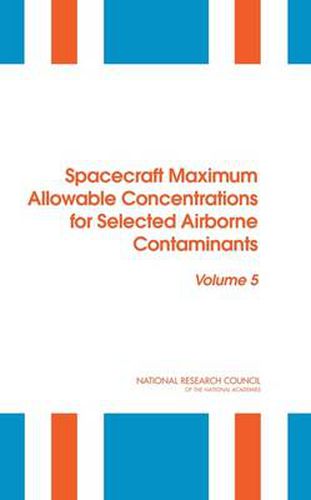Readings Newsletter
Become a Readings Member to make your shopping experience even easier.
Sign in or sign up for free!
You’re not far away from qualifying for FREE standard shipping within Australia
You’ve qualified for FREE standard shipping within Australia
The cart is loading…






NASA is aware of the potential toxicologic hazards to crew that might be associated with prolonged spacecraft missions. Despite major engineering advances in controlling the atmosphere within spacecraft, some contamination of the air appears inevitable. NASA has measured numerous airborne contaminants during space missions. As the missions increase in duration and complexity, ensuring the health and well-being of astronauts traveling and working in this unique environment becomes increasingly difficult. As part of its efforts to promote safe conditions aboard spacecraft, NASA requested the National Research Council to develop guidelines for establishing spacecraft maximum allowable concentrations (SMACs) for contaminants and to review SMACs for various spacecraft contaminants to determine whether NASA’s recommended exposure limits are consistent with the guidelines recommended by the committee. This book is the fifth volume in the series Spacecraft Maximum Allowable Concentrations for Selected Airborne Contaminants , and presents SMACs for acrolein, C3 to C8 aliphatic saturated aldehydes, C2 to C9 alkanes, ammonia, benzene, carbon dioxide, carbon monoxide, 1,2-dichloroethane, dimethylhydrazine, ethanol, formaldehyde, limonene, methanol, methylene dichloride, n-butanol, propylene glycol, toluene, trimethylsilanol, and xylenes.
$9.00 standard shipping within Australia
FREE standard shipping within Australia for orders over $100.00
Express & International shipping calculated at checkout
NASA is aware of the potential toxicologic hazards to crew that might be associated with prolonged spacecraft missions. Despite major engineering advances in controlling the atmosphere within spacecraft, some contamination of the air appears inevitable. NASA has measured numerous airborne contaminants during space missions. As the missions increase in duration and complexity, ensuring the health and well-being of astronauts traveling and working in this unique environment becomes increasingly difficult. As part of its efforts to promote safe conditions aboard spacecraft, NASA requested the National Research Council to develop guidelines for establishing spacecraft maximum allowable concentrations (SMACs) for contaminants and to review SMACs for various spacecraft contaminants to determine whether NASA’s recommended exposure limits are consistent with the guidelines recommended by the committee. This book is the fifth volume in the series Spacecraft Maximum Allowable Concentrations for Selected Airborne Contaminants , and presents SMACs for acrolein, C3 to C8 aliphatic saturated aldehydes, C2 to C9 alkanes, ammonia, benzene, carbon dioxide, carbon monoxide, 1,2-dichloroethane, dimethylhydrazine, ethanol, formaldehyde, limonene, methanol, methylene dichloride, n-butanol, propylene glycol, toluene, trimethylsilanol, and xylenes.